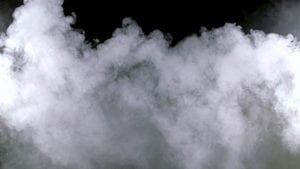 Part of the process to develop and maintain situational awareness at an emergency scene is having the ability to predict the future of the event. It’s called projection and it’s the highest level of situational awareness. [tweet this]
Part of the process to develop and maintain situational awareness at an emergency scene is having the ability to predict the future of the event. It’s called projection and it’s the highest level of situational awareness. [tweet this]
To be good at projecting the future, it is necessary to have expectations about the future events. One expectation is what will happen (outcomes) based on the tasks assigned to responders. The second expectation is – How long will it take for the first expectation to occur. At some point, someone may look at the incident and realize things are not meeting expectations. When that happens, there are only three decision options and the quality of that decision may be based more on self esteem than job knowledge.
Let’s take a structure fire scenario. A crew is sent in on the attack. The commander has an expectation that black smoke is going to turn into white smoke (the victory) once the crew reaches the seat of the fire and puts the wet stuff on the red stuff. The commander assesses the factors that help determine the time expectation for the task to be accomplished, such as:
- Crew size and crew abilities/training;
- Building size, construction, conditions, contents;
- Smoke color, volume, velocity and density; and,
- Fire color, volume, velocity and density.
 Let’s say, hypothetically, the commander at a residential room and contents structure fire has an expectation that the black smoke coming out of a window is going to turn white in 8 minutes. At the 8-minute mark the commander should assess the progress and compare the conditions to the expectations. If the conditions meet expectations (i.e., black smoke is gone and white smoke had replaced it) then the commander can take comfort in knowing things are going to plan (VICTORY! – YEA!)
Let’s say, hypothetically, the commander at a residential room and contents structure fire has an expectation that the black smoke coming out of a window is going to turn white in 8 minutes. At the 8-minute mark the commander should assess the progress and compare the conditions to the expectations. If the conditions meet expectations (i.e., black smoke is gone and white smoke had replaced it) then the commander can take comfort in knowing things are going to plan (VICTORY! – YEA!)
But what if things aren’t going according to plan (i.e., the black smoke hasn’t gone away). In fact, it’s worse, not better. At that point the commander has three decision options:
Decision 1: Leave the crew inside to continue on their mission (or continue the mission with modifications).
Decision 2: Deploy additional resources.
Decision 3: Order the withdrawal of resources from the structure.
At the most fundamental level, some might think this decision entails a logical assessment of facts. In reality, the decision is likely, if not more likely, to be based on an emotional factor – self esteem.
Yes, self esteem. First responders are action-oriented, aggressive, competitive people. It’s part of what makes responders so damn good at what they do. But, it’s also an Achilles heal.
When a commander orders a crew out of a building before the fire is out, it is the admission of failure (LOSER – BOO!). The fire has won. The commander has lost.
Crews inside aren’t going to be very happy with the order to withdraw either. In fact, in nearly every single case where commanders have told me they ordered crews out of a structure fire it was met with resistance – “Give us just a few more minutes, we’ve almost got it.” Why? Self esteem of the crew. Their very self worth is being called into question when the commander orders a withdrawal.
Chief Gasaway’s Advice
 Set realistic expectations about outcomes, keep track of time, and stand ready to order a withdraw if the incident is not progressing to expectations. Talk with crews, in advance of an incident about how the decision to go defensive will make everyone feel. It is important to flush these feelings out and get firefighters talking about it. Discuss and obtain an agreement that safety trumps self-esteem in decision making. Practice the process of transitioning from offensive to defensive. It will be much easier to do in real life if it has been practiced.
Set realistic expectations about outcomes, keep track of time, and stand ready to order a withdraw if the incident is not progressing to expectations. Talk with crews, in advance of an incident about how the decision to go defensive will make everyone feel. It is important to flush these feelings out and get firefighters talking about it. Discuss and obtain an agreement that safety trumps self-esteem in decision making. Practice the process of transitioning from offensive to defensive. It will be much easier to do in real life if it has been practiced.
Action Items
 How does it make you feel to transition tactics from offensive to defensive?
How does it make you feel to transition tactics from offensive to defensive?- Have you discussed the importance of safety over self-esteem in decision making with your crew?
- Have you practiced the skills of transitioning tactics from offensive to defensive?
_____________________________________________________________
The mission of Situational Awareness Matters is simple: Help first responders see the bad things coming… in time to change the outcome.
Safety begins with SA!
_____________________________________________________________
Share your comments on this article in the “Leave a Reply” box below. If you want to send me incident pictures, videos or have an idea you’d like me to research and write about, contact me. I really enjoy getting feedback and supportive messages from fellow first responders. It gives me the energy to work harder for you.
Thanks,

Email: Support@RichGasaway.com
Phone: 612-548-4424
Facebook Fan Page: www.facebook.com/SAMatters
Twitter: @SAMatters
LinkedIn: Rich Gasaway
YouTube: SAMattersTV
iTunes: SAMatters Radio
y.com
Phone: 612-548-4424
Facebook: www.facebook.com/RichGasaway
Facebook Fan Page: www.facebook.com/SAMatters
LinkedIn: Rich Gasaway
Twitter: @RichGasaway
Twitter: @SAMatters
YouTube: RichGasaway1
YouTube: SAMattersTV
iTunes: SAMatters

Pingback: The irrational obsession with loss | Situational Awareness Matters!™
Pingback: The irrational obsession with loss | Situational Awareness Matters!™
I’m glad to have come across this article. There are a lot of people that suffer from fragile sense of self, crippling low self esteem, no self worth and lack self respect. Yes , it’s a symptom of BPD , but some patient are not BPD . My Psychiatrist told me about mindfulness and self validation. Thanks.